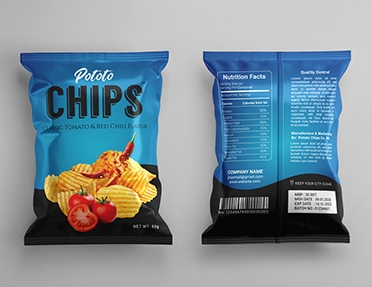Chip packaging has come a long way over the years, evolving from simple, basic designs to bold and eye-catching options that stand out on store shelves. Let’s take a closer look at the evolution of chip wrapper design.
From Plain to Vibrant: The Early Days
In the early days of chip production, packaging was plain and simple. Brands focused on creating packages that were functional rather than visually appealing. Basic colors and minimal designs were the norm, with a focus on conveying the product’s name and flavor.
The Rise of Digital Printing: Adding Color and Detail
As technology advanced, chip brands began utilizing digital printing techniques to add color and detail to their packaging. This allowed for more intricate designs, vibrant colors, and eye-catching graphics. Brands could now create packaging that stood out on crowded store shelves and appealed to consumers’ visual senses.
Bold and Creative Designs: Standing Out in a Crowded Market
In today’s competitive market, chip brands are constantly looking for ways to stand out from the competition. This has led to the creation of bold and creative packaging designs that push the boundaries of traditional chip wrapper design.
From metallic finishes to textured designs, chip brands are finding new ways to engage consumers and create memorable packaging experiences. Some brands are even utilizing interactive packaging elements, such as QR codes and augmented reality, to engage consumers in a unique way.
The Future of Chip Wrapper Design: Sustainability and Innovation
As consumer demand for sustainable packaging options continues to grow, chip brands are looking for ways to incorporate eco-friendly materials and designs into their packaging. This has led to the rise of compostable and recyclable packaging options, as well as innovative designs that minimize waste and reduce environmental impact.
Looking ahead, the future of chip wrapper design will likely continue to evolve as brands seek out new ways to engage consumers and make a positive impact on the environment. Whether it’s through bold graphics, interactive elements, or sustainable materials, one thing is certain: chip packaging is no longer just a simple wrapper – it’s a key part of the overall brand experience.

